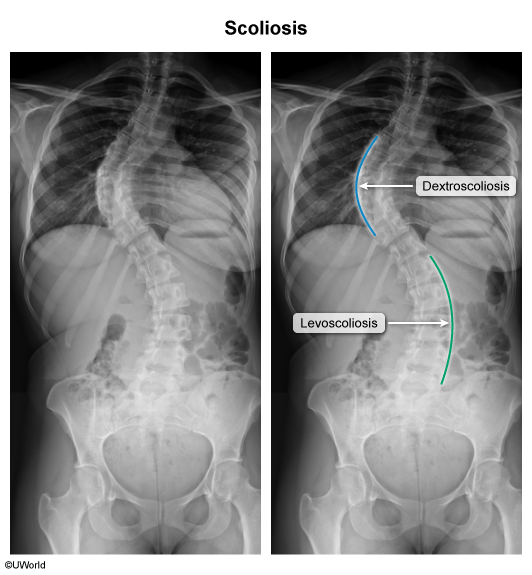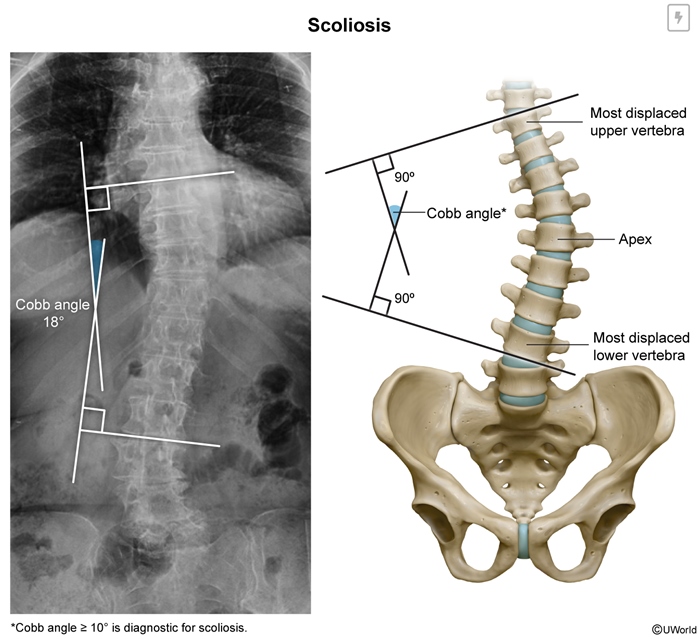Pediatric Spinal Deformities: Scoliosis, Kyphosis, And Lordosis
Article Sections
Introduction
Scoliosis, kyphosis, and lordosis are spinal deformities characterized by abnormal or excessive curvature of the vertebral column (Figure 1). They can be congenital, idiopathic, or secondary to an underlying condition. Mild spinal deformities are asymptomatic, but they can progress to cause pain, postural changes, or, in severe cases, respiratory compromise.
Normal spinal curvature
When viewed from the left side, the spine has 4 natural curves that create an "S" shape, which promotes even weight distribution and allows for efficient movement:
- Cervical spine (neck): Posterior concave shape.
- Thoracic spine (upper back): Posterior convex shape.
- Lumbar spine (lower back): Posterior concave shape.
- Sacral spine: Fused sacral and coccygeal vertebrae with a posterior convex shape.
From a posterior view, there is midline coronal spinal alignment from the superior aspect of the atlas (C1 vertebra) to the inferior edge of the coccyx. This alignment helps maintain left and right symmetry of the proximal appendicular skeleton (eg, leveled scapulae, symmetric iliac crest height).
Continue Learning with UWorld
Get the full Pediatric Spinal Deformities: Scoliosis, Kyphosis, And Lordosis article plus rich visuals, real-world cases, and in-depth insights from medical experts, all available through the UWorld Medical Library.
Figures
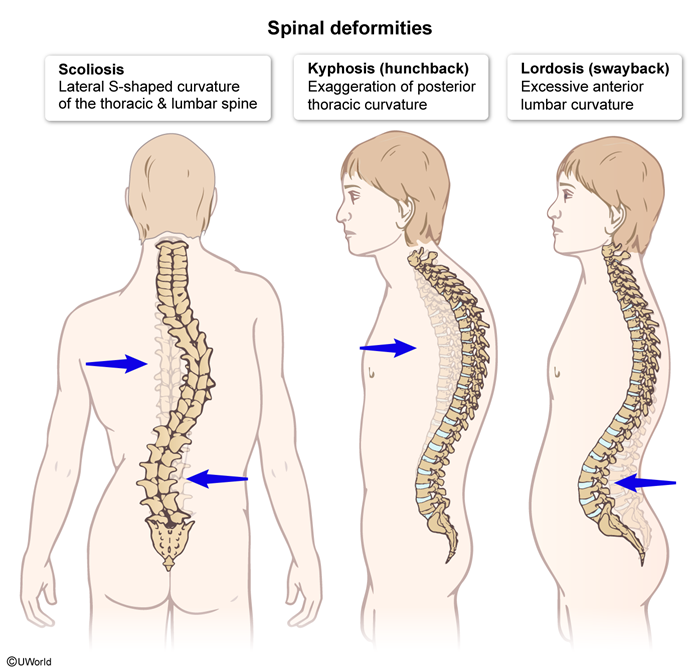
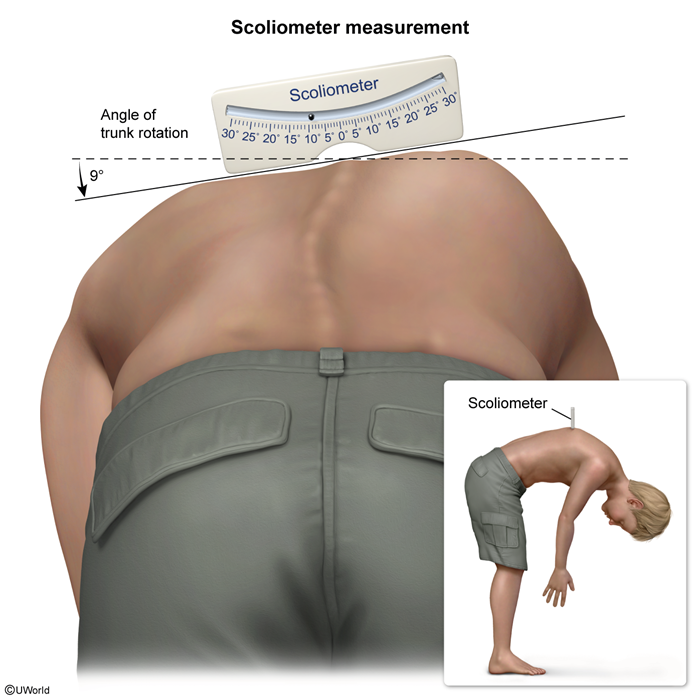
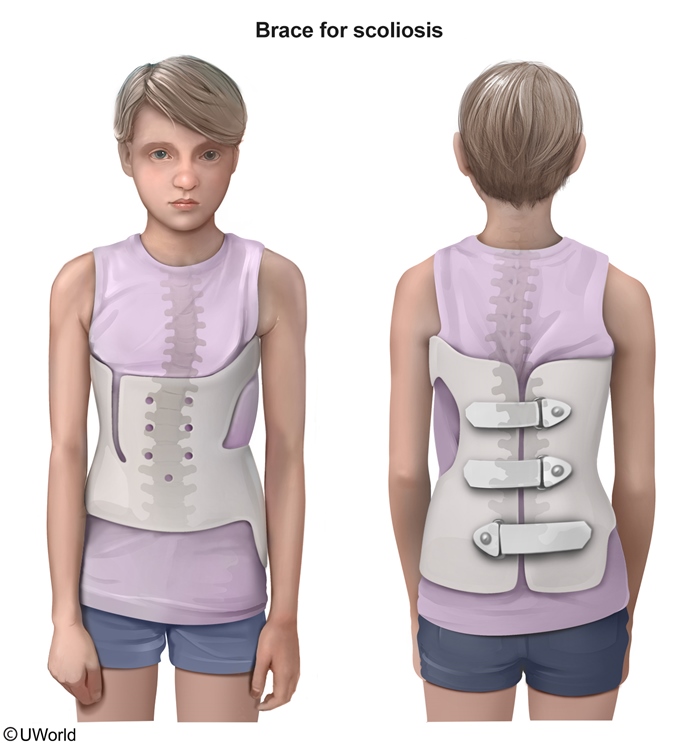
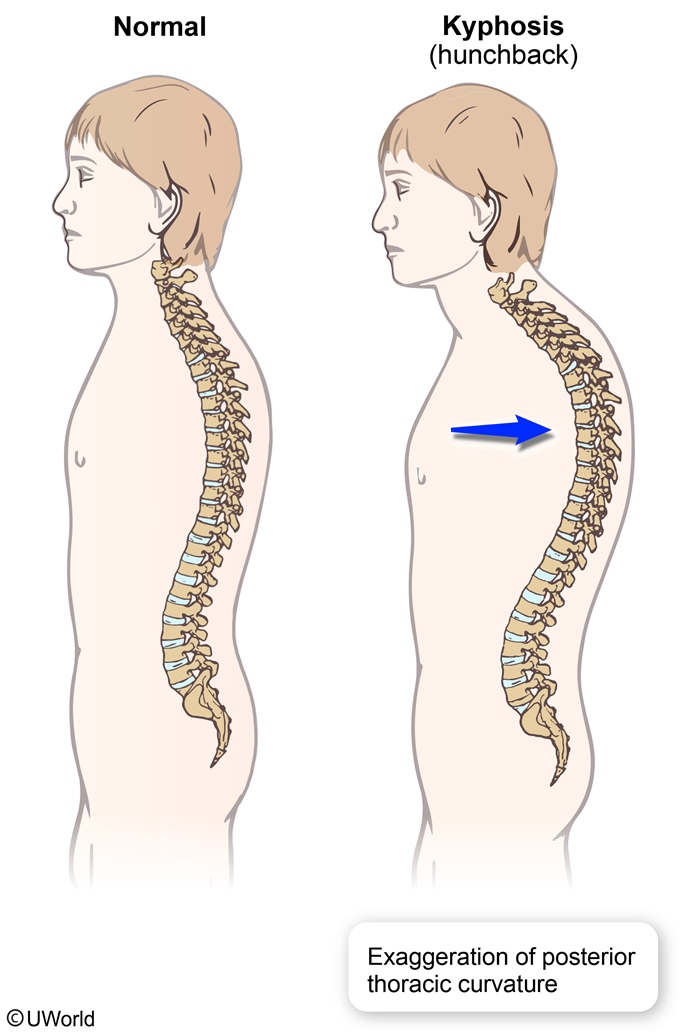
Images
